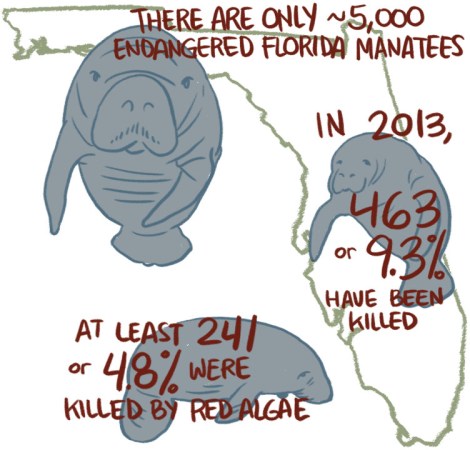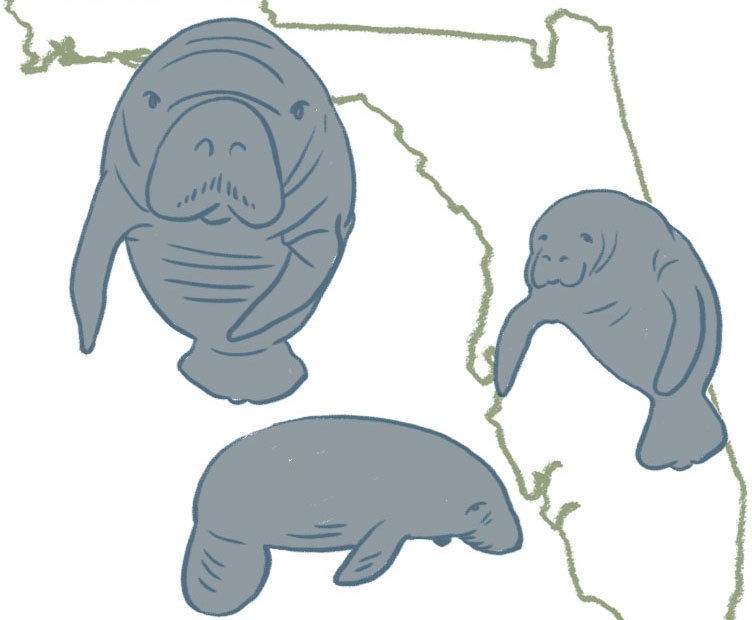Florida has the world’s largest population of manatees, around 5,000 of the adorable, curious, endangered sea cows. In 1996, a red algae bloom killed 151 of them. Until this year, it was the most lethal red tide on record. But Florida has outdone itself this time.
So far this year, 241 manatees have been killed by a red algae bloom off the southwestern coast of the state. All across Florida, at least 463 manatees have died from a variety of causes, “more deaths than had been recorded in any previous comparable period,” reports The New York Times — more than 9 percent of the population in just over three months.

Susie Cagle
Red tides are an annual occurrence in Florida, but this one’s been particularly terrible, killing countless fish and sickening beach-goers back in January. The algae clings to animals’ food sources, and contains a nerve toxin that can kill those that ingest it. Instead of swimming away from all that poison, Florida manatees have been attracted to the artificially warmed water outflows of coastal power plants, which has kept them in the algae’s way.
More from the Times:
Experts are uncertain why this year’s algae bloom was so lengthy and toxic. Phosphorus runoff from fertilized farms and lawns may have contributed, because algae thrive on a phosphorus diet. The Caloosahatchee River, which runs through rural Florida farmland, empties into the ocean at Fort Myers.
But [aquatic biologist Pat] Rose and Dr. Martine DeWit, a veterinarian with the state’s Fish and Wildlife Conservation Commission, say a major cause may be an unfortunate coincidence of weather and timing.
That “unfortunate coincidence” was a mild winter and not much wind. This is beginning to sound a whole lot like climate change, with a little help from our friends in industrial farming.



